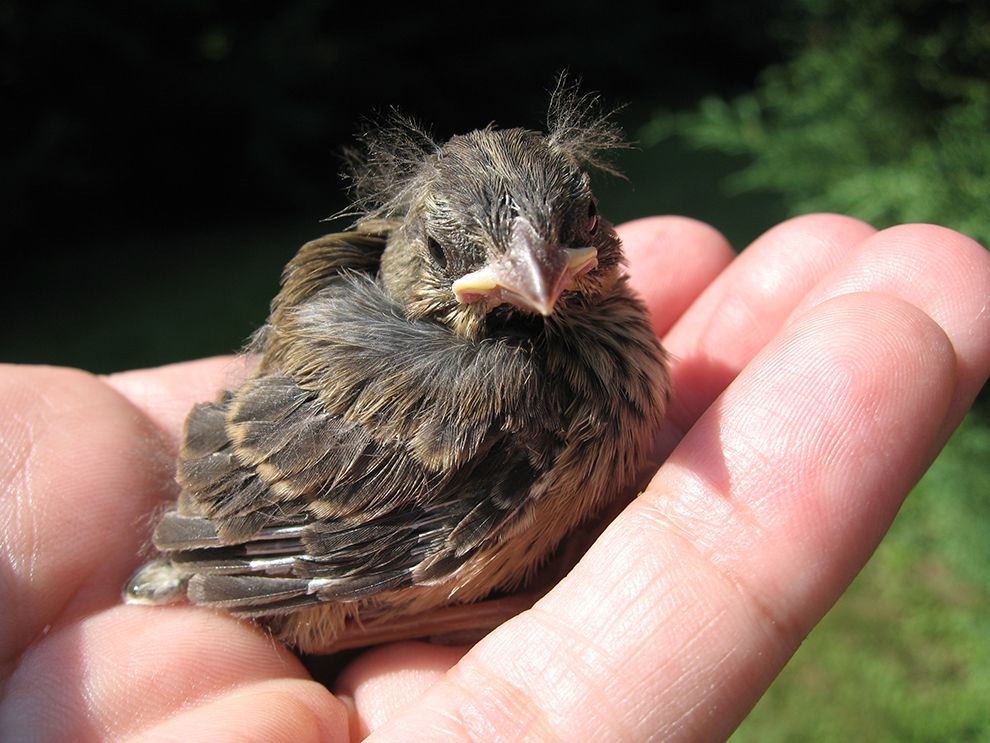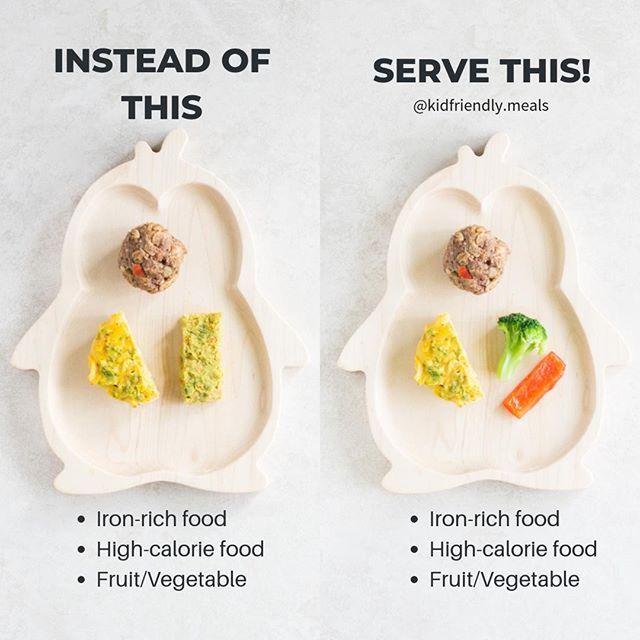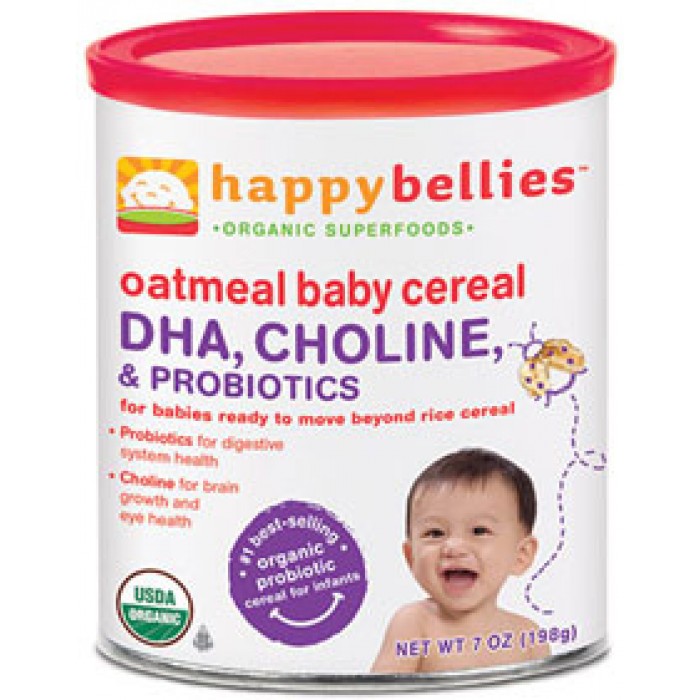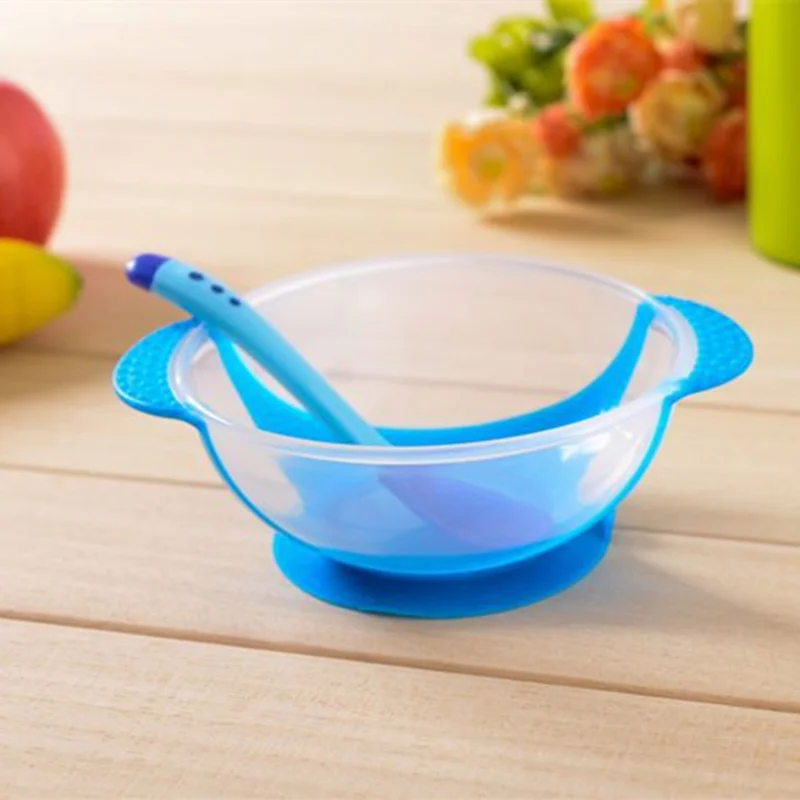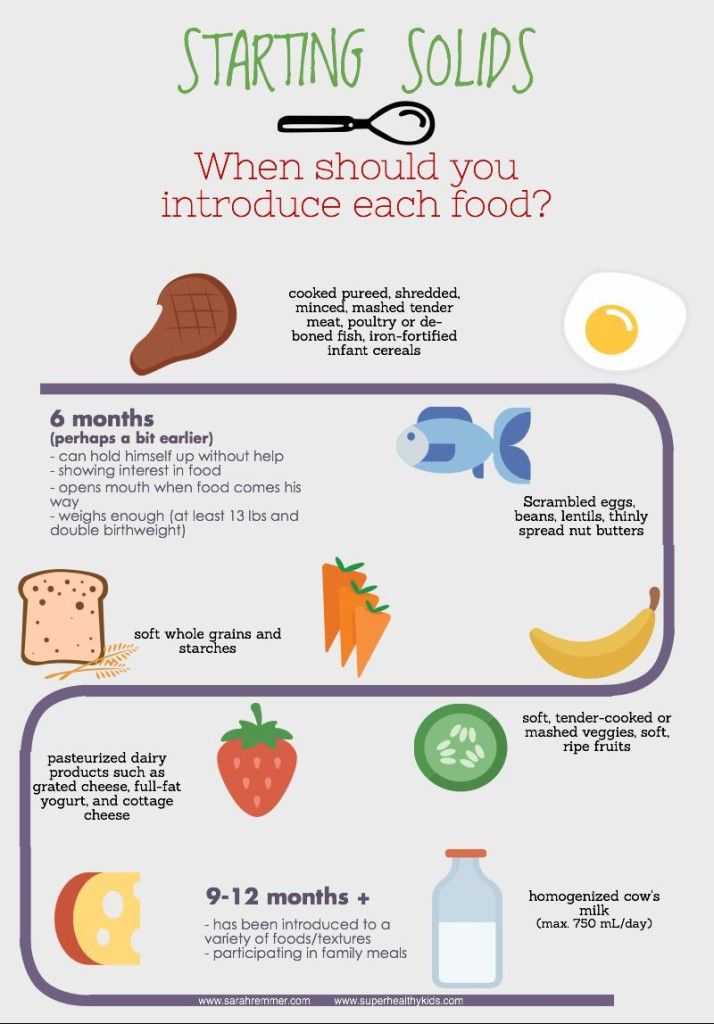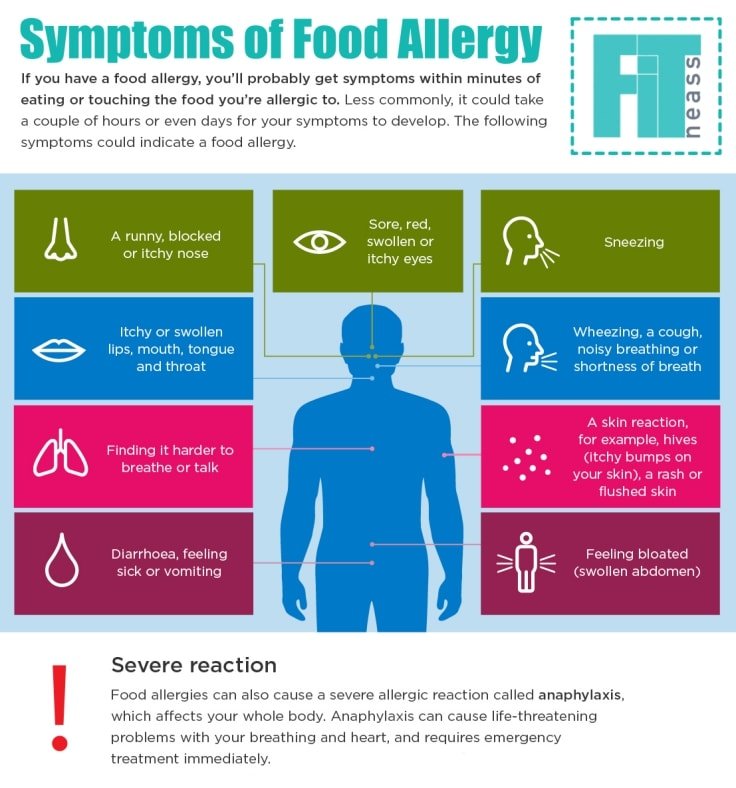Feeding baby ravens
Hand Rearing a Raven Chick Guide
A lot of pet owners love taking care of different types of bird species. In some cases, ravens and other corvids are also on the list of different owners who prefer to take care of all kinds of pet birds. Ravens have their own unique traits that make them spectacular pets to have to depend on how you view them and on how you take care of them. After all, ravens are known to be quite intelligent and noble birds that have found their way in mythology and different stories throughout history.
As great as it is to have a pet raven, taking care of a chick isn’t the easiest task to do. Ravens may be good and quite independent as adults, but, as babies, they can be very difficult for pet owners to take care of because of the very fact that they cannot do anything by themselves as chicks. Baby ravens are born naked and are yet to open their eyes. They depend on their mothers to give them the warmth and care they need when they are still chicks. Of course, it is also the job of the mother raven to rear her chicks and feed them while they are still unable to eat by themselves.
All that considered, bird owners who purchase ravens as chicks often need to act as their substitute mother. There is a need for them to hand-rear the chicks themselves if they want them to survive their childhood. Hand-rearing is not something that is totally easy to do. But if you follow our guide, you will be acting like the raven chick’s mother with no difficulties whatsoever.
Things to know about ravens as pets
Ravens are wild
Image Source
Ravens are wild birds. They are similar to any other corvids in the sense that it will be pretty difficult or even impossible to tame them and make them act like your usual household pet bird. That means that you should not expect them to have the same kind of personality as your parrots. Moreover, this is the very same reason why many of those who reared raven chicks eventually return the birds to the wild where they belong. They simply do not sit as well as domesticated pet birds when they are under captive care.
Can live for more than 20 years and are social birds
Some ravens have been reported to be able to live for more than 20 years or even up to 30 years. On top of that, they are very social birds that prefer to interact with their kind instead of living under isolated conditions. They do not live well alone and will often try to make calling noises to attract other ravens. Those two factors combined mean that it will be a very heavy responsibility to take care of ravens as adults after rearing them as chicks.
Ravens bite
Even if you were the one who reared a raven chick, adult ravens could still bite you. Moreover, these birds have really strong bites that can even crush smaller bones found in your fingers. That said, they can be pretty aggressive. However, those you reared as chicks will be less aggressive than adults that were caught directly from the wild.
These birds are pretty noisy
It is perfectly normal for pet birds to be noisy. Parrots like to mimic sounds and repeat them as they will. Other types of birds sing tunes that are actually very appealing to the ears. However, ravens squeak and make noises that are not as fun as the sounds parrots mimic or the tunes that canaries sing. Instead, the sounds that ravens make are pretty noisy and annoying to the ears. Ravens do make sounds that sound a lot better compared to crows, but these sounds are so loud that you can hear them from a room away. They also make these sounds to attract other ravens. That means that you can expect other nearby wild ravens to come flocking to your house if they hear your pet calling them.
Other types of birds sing tunes that are actually very appealing to the ears. However, ravens squeak and make noises that are not as fun as the sounds parrots mimic or the tunes that canaries sing. Instead, the sounds that ravens make are pretty noisy and annoying to the ears. Ravens do make sounds that sound a lot better compared to crows, but these sounds are so loud that you can hear them from a room away. They also make these sounds to attract other ravens. That means that you can expect other nearby wild ravens to come flocking to your house if they hear your pet calling them.
Ravens are active
While ravens are not large birds, you would have to keep these pets in large cages. That is because they are very active, and they like to jump from one spot to another. The reason for this behavior is the territorial instincts of the raven. They prefer to reign well over their territory by moving from one spot to another to make sure that no other raven takes over it. All that considered, you have to keep these birds in large cages. Moreover, keeping them indoors should be out of the question if you want your ravens to live well and active.
Moreover, keeping them indoors should be out of the question if you want your ravens to live well and active.
They are very intelligent
Ravens are some of the most intelligent birds. It is said that they are so intelligent that they can even recognize themselves when they see their reflections in mirrors or bodies of water. Ravens are also experts at crafting primitive tools from wood. On top of that, ravens have really large brains relative to their body mass. Studies show that their brain to body mass ratio is only slightly smaller than the average human’s. This allows the raven to perform complex tasks, do simple and basic calculations, and to understand its environment better than most animals or even other birds. In that sense, they are too intelligent for the average pet owner to take care of but can actually be good companions when raised well.
How to hand-rear raven chicks
Image Source
Now that you know more about the raven as a pet, it is now time for you to get to know how to hand-rear them as chicks in case you rescued some or if you purchased baby ravens. Here are some tips you need to know if you want to hand-rear these birds the right way:
Here are some tips you need to know if you want to hand-rear these birds the right way:
Raven chicks need warmth
Before anything else, the one thing you should first know is that raven chicks need warmth. They are born almost completely naked and have very poor thermoregulation. You need to provide them with an external heat source during the first 7 to 10 days after they hatch. After that, you will begin to notice how their feathers develop at a rapid pace.
Feed them with soft food
Raven chicks are almost completely dependent on their mother for food. On top of that, they were not made to be able to handle the usual food that adult ravens eat. In that case, hand-feed them yourself and make sure that you give them soft and easily digestible food. Caterpillars and scrambled eggs are good examples. As they get older in about a week or so, you may be able to feed them table scraps, small insects, fruit, and even bird pellets. Their diet should be composed of 50% protein. However, make sure that you moisten their meals before giving them to the chicks so that they will be able to digest them better.
However, make sure that you moisten their meals before giving them to the chicks so that they will be able to digest them better.
Feed them frequently
When hand-rearing raven chicks, the key here is to feed them frequently with smaller meals. They like begging for food and should be fed whenever they start begging. Feed them once every 30 minutes but make sure that the meals are small yet large enough to make them feel full. Feeding should start around sunrise until about 10 in the evening.
Mimic a parent raven
Try to mimic how a mother raven feeds its chicks as much as possible to make feedings more natural for these babies. Mimic a parent’s call to make the chicks gape their mouths wide open. They will associate this sound with feeding and will easily respond to this later on. After that, place the food inside their mouths yourself once they start gaping. Use a tongue depressor and gently place the food inside the chick’s mouth while avoiding the entrance to its trachea. You can also use forceps that are blunt at the tip for easy and safe feeding.
You can also use forceps that are blunt at the tip for easy and safe feeding.
How To Feed A Baby Raven – TheEcoBaby
A baby raven needs to be fed every two to three hours, and should have access to food at all times. Ravens are generally very messy eaters, so be prepared for a bit of a mess when feeding them. It is important to make sure that the food you are giving them is nutritious and appropriate for their age.
How frequently should you feed baby birds? The number and frequency of meals for a bird are determined by its species, age, growth rate, and diet. Hatchlings that are newborn up to one week old should be fed at least six times per day. Please see the information below for more details. To determine whether hatchlings are growing properly and whether or not they are responding to the diet, it is critical to monitor their response to all nutrients. In most cases, hatching hatchlings should be fed as soon as possible, unless you are a professional. It is critical to remember that hatchlings require different nutritional requirements than grown specimens.
It is critical to remember that hatchlings require different nutritional requirements than grown specimens.
All food must be prepared fresh for each nourishing. If you prepare the meals ahead of time for several feedings, your hatchling may be exposed to potential bacteria attacks. Feeding hatchlings with a syringe is the most common method, but a variety of tools are also useful. When the crop is empty, it is best to feed it. The crop is the sack that dangles from the neck at the base of the chest. During this procedure, the trachea remains closed, allowing for the delivery of a large amount of food in a short period of time.
How Do You Take Care Of A Baby Raven?
Credit: img-dpreviewWhen you take care of a baby raven, you need to provide it with a warm and safe place to nest, food and water, and plenty of love and attention. You also need to make sure that the raven has room to fly and exercise.
Ravens are omnivorous and opportunistic animals that live in a variety of environments and are able to adapt to unexpected situations.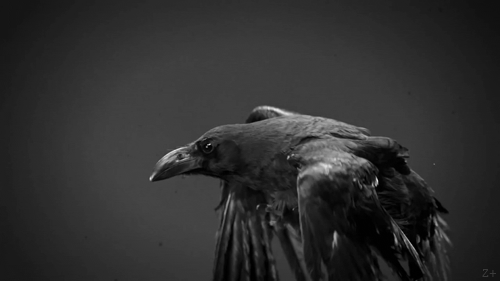 Ravens can mimic any sound and recall many words, making their lives more interesting than they appear. It is not uncommon for crows to be territorial and jealous of their territory. The Ravens are an exceptional set of intelligent and curious animals. Ravens born in captivity can be surprisingly docile and intelligent, in addition to bonding with their caregivers. You should not try to domesticate an adult crow and take it out of its natural habitat because it can become violent. Ravens, with a wingspan of four feet and a height of about 25 inches, are far larger than crows, which have a wingspan of about four feet and a height of about 18 inches.
Ravens can mimic any sound and recall many words, making their lives more interesting than they appear. It is not uncommon for crows to be territorial and jealous of their territory. The Ravens are an exceptional set of intelligent and curious animals. Ravens born in captivity can be surprisingly docile and intelligent, in addition to bonding with their caregivers. You should not try to domesticate an adult crow and take it out of its natural habitat because it can become violent. Ravens, with a wingspan of four feet and a height of about 25 inches, are far larger than crows, which have a wingspan of about four feet and a height of about 18 inches.
Ravens soar and glide in the sky, demonstrating aerial acrobatics, whereas crows do not dive or somersault. The raven is not a Golden Retriever, but he or she can get close to his or her owner, whereas the Golden Retriever is territorial. A container wide enough but not so deep for the young raven to cleanse itself and change its water once a day should be placed as soon as it walks and has strength in its legs.
The American Goldfinch is one of the most common birds found in North America. The behavior of this small finch while nesting is fascinating. Young birds are fed by both the male and female, and while they are small, the female lays their eggs. After hatching, the young leave the nest about 5-6 weeks later, and the female only incubates for about 18 to 21 days. A male may stand or crouch in front of the young, but he is not usually seen brooding them. A fledge typically occurs between the ages of 35 and 42 days and is fed by both parents.
Can You Keep A Raven As A Pet?
It is illegal in the United States to keep crows and ravens as pets without obtaining a special permit. The Migratory Bird Act of 1916 prohibited the possession of any migratory bird, and it also prohibited the possession of wild birds bred in the United States. Only wildlife rehabilitators who are licensed by the Wildlife Rehabilitators Board are exceptions to this rule. As a result of this act, both crows and ravens are protected.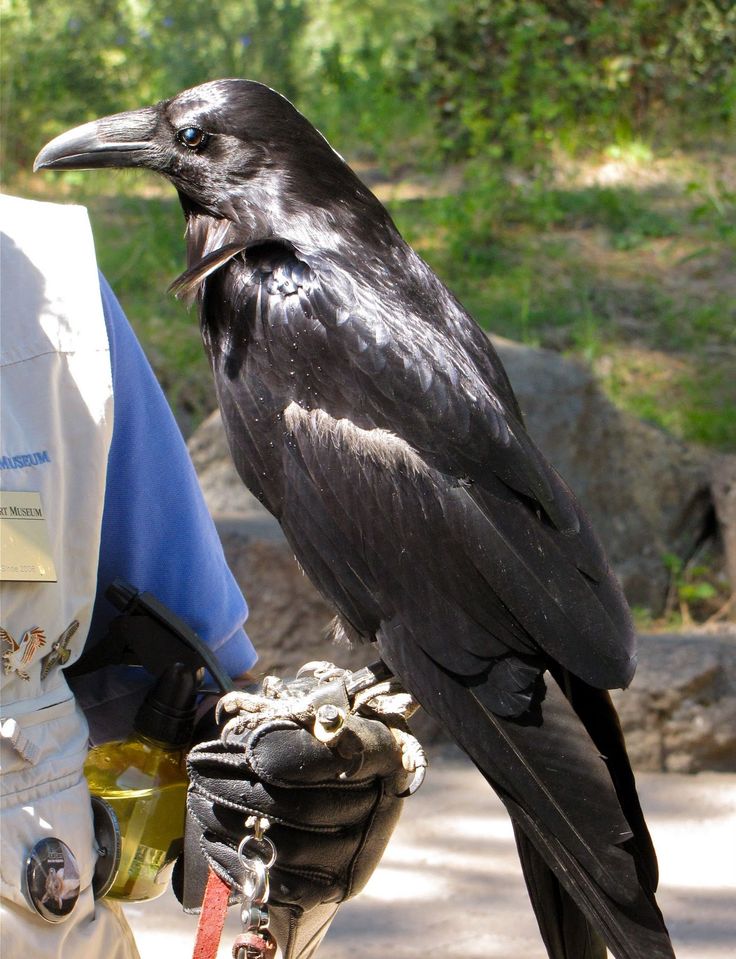
Do Ravens Feed Their Babies?
Credit: beherenowThere is little information available on whether or not ravens feed their babies. However, it is known that ravens are very protective of their young and will do everything they can to ensure their safety. It is likely that they would also provide food for their offspring if necessary.
Ravens are the type species of the genus Corvus and can be found in the Northern Hemisphere. Ravens are four times more powerful and weigh more than a crow. The tundra of the high Arctic is among the most frigid environments on the planet, and they can be found in a variety of climates. Ravens eat a wide range of foods, including fish, meat, seeds, fruit, carrion, and trash. They frequently collaborate to eliminate prey, and they are intelligent. Captive Ravens can live for up to 40 years without the use of predators. The ability of common ravens to collaborate on solving problems is extremely valuable.
Ravens mate for life and spend the majority of their time in pairs.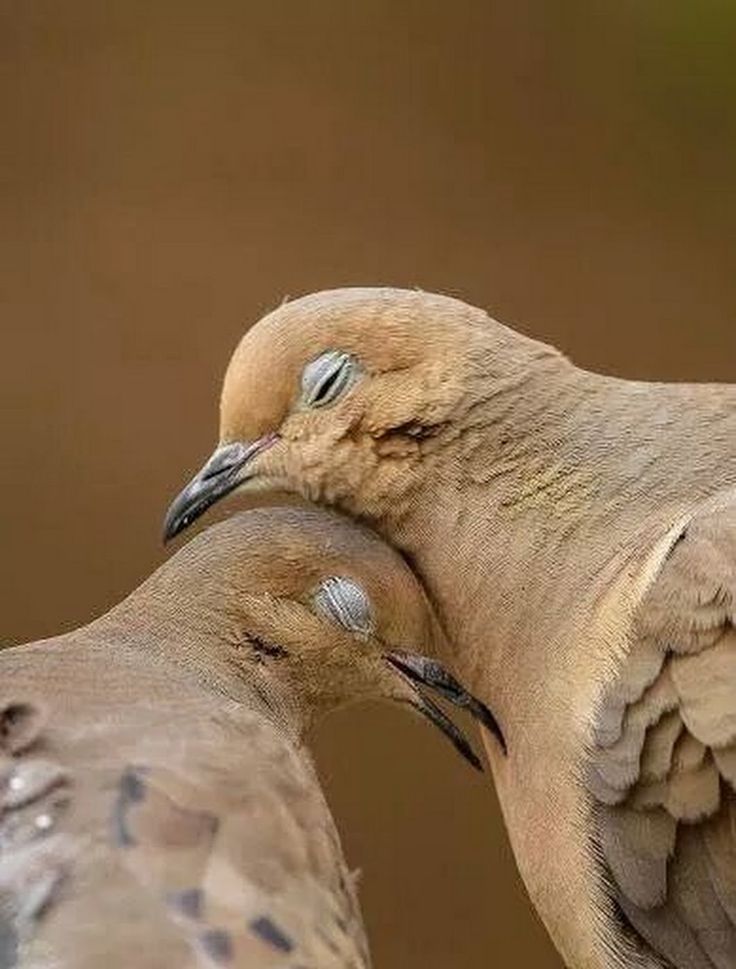 Ravens leave their parents’ nests as soon as they reach puberty and begin to grow up. In this group, people eat, play, and mate together until they find a mate, then begin a new life together.
Ravens leave their parents’ nests as soon as they reach puberty and begin to grow up. In this group, people eat, play, and mate together until they find a mate, then begin a new life together.
When birds are inactive, their bodies lose up to 50% of their body weight. When the bird’s weight falls, its metabolic rate and appetite for food decrease, and it is more vulnerable to predators. A starving bird can live for a week or two, but most adult birds can live without food for a week or two.
The Best Thing To Do When You Find A Baby Bird
If you find a baby bird, the best thing you can do is leave it where you found it or move it to a shaded area. It is their responsibility to come back. If you can’t find the nest, place the nestling back in it.
How Long Can A Raven Live In Captivity?
Credit: arabnewsIn the wild, they are said to live between 10 and 15 years; however, in captivity, they can live for more than 40 years.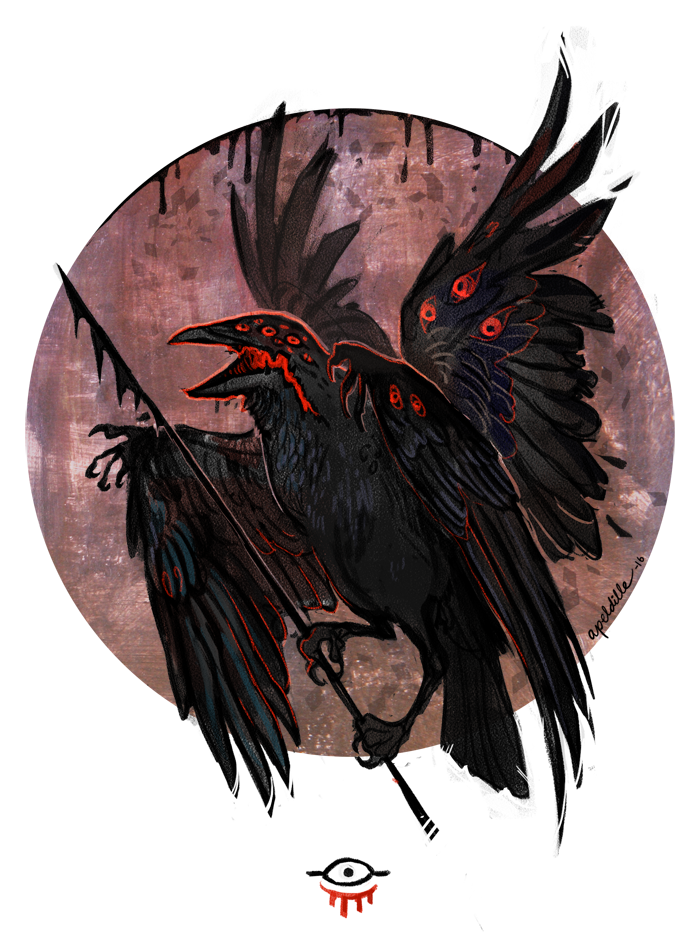
A crow is a member of the Corvid family that includes crows, ravens, and the rook. Most crows’ lifespan ranges between 7 and 8 years, but they can live for much longer. Learn more about crows’ life spans in the following paragraphs. In most cases, crows do not reach sexual maturity until they are one year old or older, and they die before they have reached sexual maturity. Birds in captivity are more likely to survive than those released into the wild due to the majority of the hazards they face. American crows have been observed to live for more than 25 years in captivity. Many crows and other corvids, in addition to holding caskets for their deceased, regularly carry them around.
This type of mass transit is strikingly similar to the real thing. One theory holds that crows have morbid fascination with the body that leads them to examine it, almost like a postmortem, to learn how someone died. The average lifespan of a crow is between 4 and 6 years, making them one of the shortest-lived birds.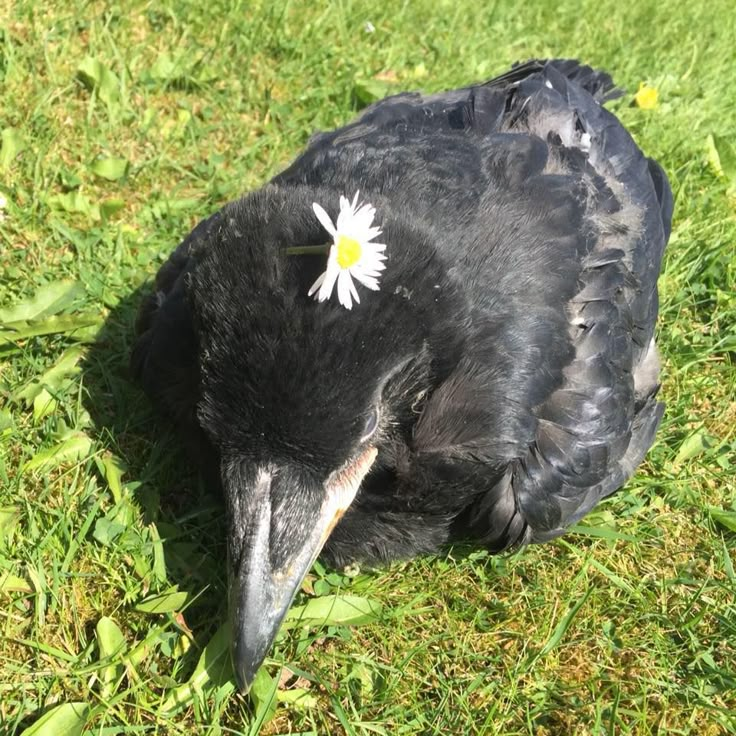 A raven can live for 60 years in captivity, and crows and ravens have hybridised. Pied crows may live for up to 20 years in some cases. Some crows have been reported to live for 15 years, while others have lived for 30 years or more. Ravens, unlike crows, have a longer lifespan than most other birds, and they are some of the longest-living passerines on the planet.
A raven can live for 60 years in captivity, and crows and ravens have hybridised. Pied crows may live for up to 20 years in some cases. Some crows have been reported to live for 15 years, while others have lived for 30 years or more. Ravens, unlike crows, have a longer lifespan than most other birds, and they are some of the longest-living passerines on the planet.
Ravens are intelligent birds that can use tools, solve problems, and remember information for up to a year.
Ravens, one of the most intelligent birds, have evolved to be among the most adaptable species on the planet. They are thought to be intelligent, have a strong sense of tools, and can recall information for up to a year. This type of intelligence is thought to aid them in surviving in the wild. It can take up to two years to obtain a slot in the course for an apprentice at Raven. Because of the extensive training that they receive during this time, the apprentices develop the ability to hone their minds and become patient and committed to their goals.
Ravens are well-liked by many people due to their intelligence and beauty. Because they are a part of our natural world, their protection and respect is critical.
How Long Can A Crow Live In Captivity?
According to the Encyclopedia Britannica, “a crow can live 13 years in the wild and over 20 years in captivity,” but that does not mean it can live 100 years.
Caring For A Pet Crow
As a pet, can a crow be kept? Because crows are extremely intelligent, you will have to devote a lot of time and attention to them. It is also important to prepare yourself for the bird to associate you with stressful situations, as crows have memory of these for up to five years. Although crows can be highly domesticated, they can also be very friendly and loving pets.
What Is The Longest Living Raven?
The lifespan of captive Corvus corax ravens may range from 70 to 80 years, according to one anecdotal report, with one raven living to 100 years old. A 21.9 year-old female has the world record for the longest lifespan of any wild raven, with an average lifespan of 3 years.
A 21.9 year-old female has the world record for the longest lifespan of any wild raven, with an average lifespan of 3 years.
Intelligent Behavior In Animals Not Just Due To Large Brains
We have shown that the intelligent behavior of these species can not simply be attributed to the size of their brains, but also to the way they use them. As an example, parrots can recall the locations of up to 200 different food items.
How Old Was The Oldest Raven?
The oldest known wild Common Raven was about 22 years old when he was discovered.
Mating For Life: The Strange But Wonderful Bond Of Ravens
Ravens’ behavior is fascinating. They appear to be full-size demons, but they are half-demons because they are half- demon. They are also known for their long-term mateship due to their strong pair bond. Ravens are most likely to mate for life because they exhibit a strong bond between themselves and the behaviors that support that bond.
What To Feed A Baby Crow
For the time being, it is suggested that you feed hard-boiled egg yolks. unsalted peanuts, corn, sunflower seeds, fresh fruit, and mealworms or crickets are also good choices for snacking. Use caution and be mindful of your young crow’s exposure to the crows around you. Outside, you can let other crows look in, and the crows will investigate.
unsalted peanuts, corn, sunflower seeds, fresh fruit, and mealworms or crickets are also good choices for snacking. Use caution and be mindful of your young crow’s exposure to the crows around you. Outside, you can let other crows look in, and the crows will investigate.
Orphaned and hungry crows, on the other hand, may require some assistance to find food. Children should eat a soft diet with plenty of protein that mimics what their parents would provide them. It is typical for orphans to be able to feed themselves by the age of six weeks. The crows are known to feast on anything found, and they are notorious for raiding gardens and cornfields. Almonds, acorns, and walnuts, as well as any nuts found in your area, will be eaten. There is usually some millet, milo, and wheat that crows will eat. suet is a high-energy food that can be made with seeds or grain mixed with beef fat during the winter months.
Caring For A Baby Crow
If you find a baby crow, you should return it to its nest or bring it to an established crow family.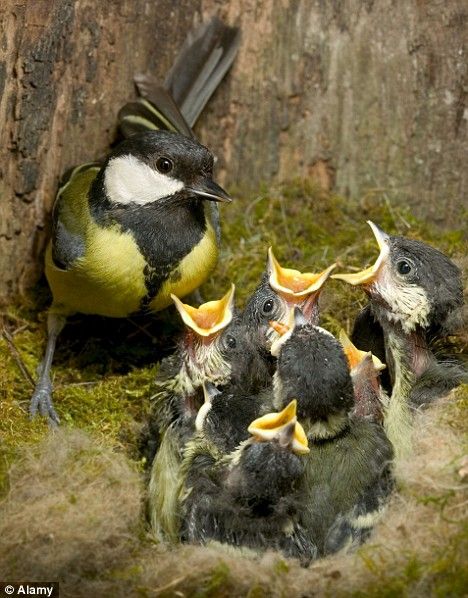 A Crow nestling will eat partially digested animal matter and be unable to obtain the vital protein it requires if it is removed from its family. After four weeks, a young crow must leave the nest and develop a diet containing animal matter in order to grow.
A Crow nestling will eat partially digested animal matter and be unable to obtain the vital protein it requires if it is removed from its family. After four weeks, a young crow must leave the nest and develop a diet containing animal matter in order to grow.
What is the right way to feed a crow chick? And a chick?
Headings: Corvids
Somewhere God sent a piece of cheese to a crow
How to properly feed a crow and a crow chick?
With all due respect to Ivan Andreevich Krylov, it is worth noting that his fable made a significant contribution to ornithology, but, unfortunately, not a positive one. After all, people now, as they see a crow, strive to treat it with cheese, which a hungry bird enjoys eating. So can crows be fed cheese? And how to properly feed a bird that, by chance, got into trouble and ended up under the care of people. The main principle - do no harm, here we are talking about the same. Based on our practice, feeding birds with foods high in fat causes serious pathologies of internal organs - hepatitis, fatty liver, pancreatitis, coronary artery disease, cholecystitis, cancer, immunodeficiencies, arthritis, arthrosis. Getting this set of chronic diseases is difficult to restore the health of the bird again. And what can we say about the flight, where you need lightness and a healthy heart, not to mention the joints. Let's figure out how to properly feed the corvids. We remind you that the corvid or raven family includes not only the gray crow, but also the black crow, jackdaw, rook, common raven, magpie, kuksha, common and blue jay.
Based on our practice, feeding birds with foods high in fat causes serious pathologies of internal organs - hepatitis, fatty liver, pancreatitis, coronary artery disease, cholecystitis, cancer, immunodeficiencies, arthritis, arthrosis. Getting this set of chronic diseases is difficult to restore the health of the bird again. And what can we say about the flight, where you need lightness and a healthy heart, not to mention the joints. Let's figure out how to properly feed the corvids. We remind you that the corvid or raven family includes not only the gray crow, but also the black crow, jackdaw, rook, common raven, magpie, kuksha, common and blue jay.
What can be given to ravens and corvids? Proper diet.
The basis of the diet of these birds is:
- lean meats - beef, turkey, chicken.
- from offal, corvids can be given chicken hearts, stomachs, heads, necks (feeding chicken heads and necks refers to crows, crows and rooks, sometimes jackdaws and jays also love such products very much).

- the diet of corvids also includes fat-free cottage cheese,
- boiled river fish (it is undesirable to feed it raw because of the risk of infecting the bird with helminthiases, for the same reason it is impossible to feed earthworms to corvids, as this can cause the development of a serious disease in birds - syngamosis).
The diet of the crow contains more meat than the diet of other corvids. And best of all, if the thawed mice and day-old chickens prevail in the diet of the crow, and not just meat and offal.
As obligatory top dressing, the corvids need insects in the diet:
- flour worm
- crickets
- locust
- ant eggs
These birds are fed in nature, and our task is to bring the conditions of keeping and feeding birds closer to their natural ones. Therefore, treat your corvid pet not only with meat, but also with insects, berries, fruits, and vegetables.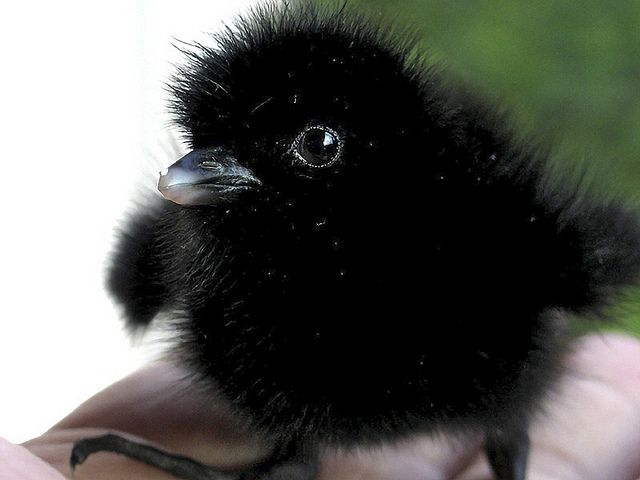 Berries, vegetables and fruits can be given any, you just need to be sure that they are not treated with insecticides.
Berries, vegetables and fruits can be given any, you just need to be sure that they are not treated with insecticides.
As a supplement, corvids can be fed boiled eggs, but in small quantities.
You can also give boiled buckwheat, rice, millet, corn grits. But, of course, the main percentage in the diet is still occupied by meat.
Birds can be offered dried bread, white bread crackers, pumpkin seeds, sunflower seeds, gammarus as treats. As a mineral supplement for birds, egg shells can be ground into powder and placed in a separate feeder.
What should never be given to birds?
Now let's designate what exactly cannot be given to birds.
The list of prohibited products includes:
- salty, fatty, sweet, fried foods,
- sausages,
- milk,
- bread,
- canned food,
- alcohol,
- crackers,
- chips,
- juices,
- peanuts (here we mean the whole list of what is harmful to humans),
- citrus fruits (there is little information about this, someone feeds birds citrus fruits for a long time and this does not cause any pathologies, and in some birds, taking citrus fruits causes severe allergic reactions).
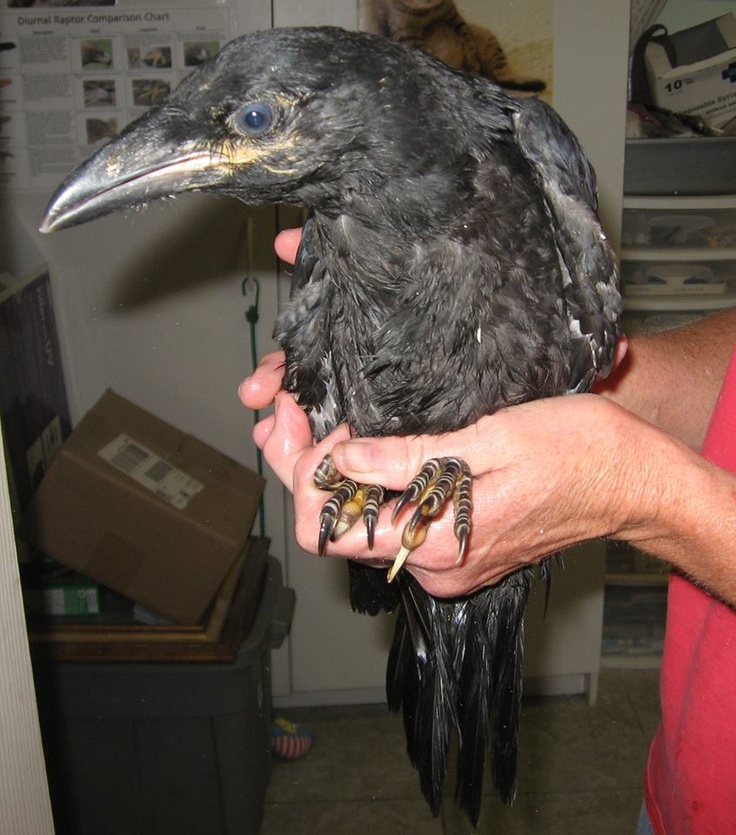
Now about vitamins. If the bird is provided with a complete diet, which includes insects and mineral supplements, then the need for vitamins is reduced to a minimum. But still, we recommend fortification twice a year - in early spring and late autumn, that is, in courses of 2 weeks. From well-proven vitamins, German Beaphar Mauser Tropfen, Lebensvitamine can be used, from domestic ones - Chiktonik. A complete, well-balanced diet is the basis of the health of any living being.
Veterinary ornithologist of the bird hospital "Green Parrot" Pavlova E.A.
Author: petitabeille | Date: 08/14/2016 - 12:56
top 5 misconceptions / City news / Moscow website
Ecology
Experts told you what you can and cannot do if you find a chick that has fallen out of the nest.
Misconception 1. If you spot a flightless chick in a forest or park, it needs help. The chick must be taken away, otherwise it will die.
The chick must be taken away, otherwise it will die.
Most likely you have a fledgling in front of you. Fledglings are chicks that have already flown out of the nest, gradually learning to fly and independently get their own food. But while they are learning, their parents continue to care, feed and protect. The parents are around. You do not need to touch such chicks, especially save and take them somewhere. The bird does not fly away from people because it simply cannot fly away quickly yet and tries to hide. In most cases, you don’t need to do anything, it’s better to just walk by. Soon such chicks will learn to fly from branch to branch, get food and will be ready for independent life.
Misconception 2. Chicks never need help.
Sometimes help is needed. For example, if the chick fell out of the nest too early in a strong gust of wind. Nestlings that are not fledglings can be easily distinguished by extensive featherless areas of the body, too short feathers and “tubes” at the base.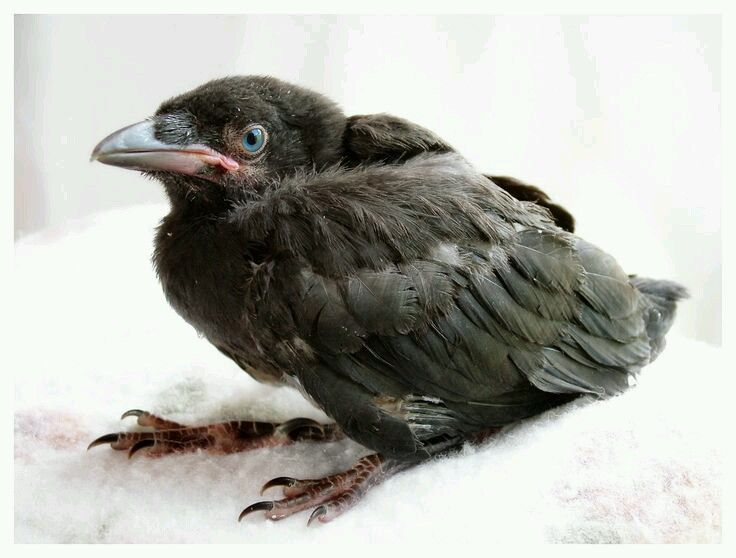 In this case, most often, the baby needs the help of a specialist. And it happens that a fledgling, which usually does not need help and human participation, is too close to the road or a cat walks nearby, in which case it is really in danger and needs help. It can be carefully moved a little further away, planted under the nearest bush or on the lower branches and move away. His parents will soon find him and feed him. If the chick is injured, then he may need the help of specialists (+7 (495) 777-77-77).
In this case, most often, the baby needs the help of a specialist. And it happens that a fledgling, which usually does not need help and human participation, is too close to the road or a cat walks nearby, in which case it is really in danger and needs help. It can be carefully moved a little further away, planted under the nearest bush or on the lower branches and move away. His parents will soon find him and feed him. If the chick is injured, then he may need the help of specialists (+7 (495) 777-77-77).
Misconception 3. If a person has touched a chick, then the parents will not accept it back, because the smell of a person will remain on it.
Birds don't have as much sense of smell as mammals, and parents won't leave their chick (fledgling) if you pick it up and move it to a safe place. However, do not forget that you should not touch small chicks if you accidentally find a nest. While your scent won't scare off your parents, your actions can disturb the birds and make the nest visible to predators.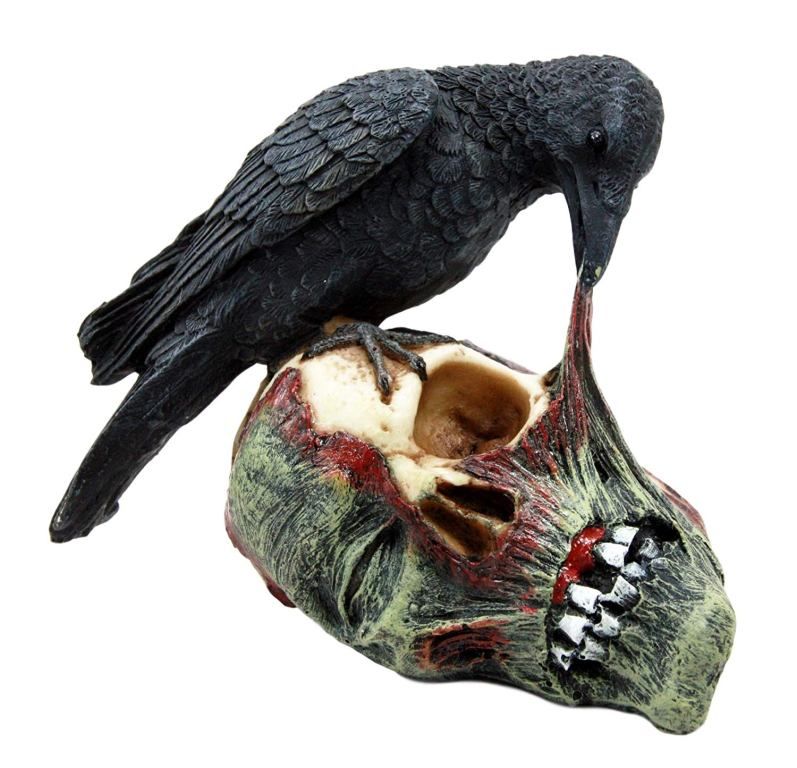
Misconception 4. You can feed the chick with anything, the main thing is that he is not hungry. The animal knows for itself what is good for him and what is not, and will not eat food that he considers harmful.
If it so happened that the chick ended up at your home, and you decided to feed it yourself, and not seek help from specialists, keep in mind that it is very difficult to choose a balanced and healthy food without special knowledge and skills. A hungry chick will eat whatever you offer him, and if the food is not suitable, then the bird will die in a few days.
Misconception 5. A rescued and home-fed chick can be released into the wild when it grows up and gets stronger.
Unfortunately, in most cases, chicks taken from the wild will not be able to adapt to life in the wild on their own. Such birds have not learned to identify sources of danger and are not afraid of people or animals. Yes, and getting food in the wild is not so easy for fosterlings.